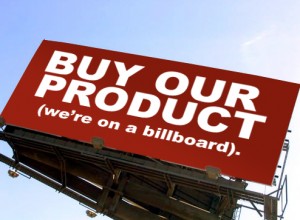 At some point in the lives of most growing businesses comes the need for print advertising. Whether you’re creating a direct mail postcard to gain new business, placing a small ad in your local newspaper, or launching a full-color ad campaign in a national print magazine, the difference between a successful advertisement or a waste of valuable space can be made by avoiding these 7 deadly sins of print advertising.
At some point in the lives of most growing businesses comes the need for print advertising. Whether you’re creating a direct mail postcard to gain new business, placing a small ad in your local newspaper, or launching a full-color ad campaign in a national print magazine, the difference between a successful advertisement or a waste of valuable space can be made by avoiding these 7 deadly sins of print advertising.
Deadly Sin #1: Forgetting Your Call to Action
Don’t ever forget the purpose for your advertisement – to sell something! Every ad should include some type of call to action for your customers. You may be asking them to drop by your business, to call you for special pricing or details of a product, or to go online and order your product. Whatever it is you want to achieve from your ad, make sure it’s clear to your consumers.
Deadly Sin #2: Not Using a Headline
When your ad is situated among other ads or  body copy, readers will often just quickly scan the page to see if they’re interested in reading more. Make sure to include a headline or some other attention-grabber in your print ad to make sure they stop and read it.
Deadly Sin #3: Catering to the Wrong Audience
Before spending valuable time and money with print advertising, consider your target audience, and cater to them. In addition to ad placement (for example, you probably wouldn’t get a great response to a candy bar ad that’s been published in a dieting guide!) consider fonts, colors, and imagery that are attractive to your audience. Choose professional fonts and images along with blues and grays for your professional services business. Choose bright colors, fun fonts, and kid-friendly imagery for your childcare center.
Deadly Sin #4: Using ALL CAPS
With the increasing popularity of social networking like Facebook or Twitter, where special text effects like bold and italic aren’t always possible, using all capital letters has become a way to stress part of your text, or even to yell. Writing your entire ad in all caps is not only difficult to read, but studies have shown it to be annoying and even offensive to readers. All caps may be acceptable in your headline, but should never be used in body copy.
Deadly Sin #5: Reverse Type for Body Copy
Reverse copy, or printing light colored text on a dark background (such as white text on a black background), can be a great way to single out an important portion of text in your ad, but using reverse type for the bulk of your body copy is a big advertising no-no. Research has shown that using reverse copy for the bulk of your ad will reduce readership by up to 80%. Because body copy is generally smaller than headlines or important points, reversing the colors makes it difficult, even painful, to read and comprehend. For the greatest response to your print ad, stick to dark colored fonts on a light colored background.
Deadly Sin #6: Too Small Text
It’s better to create a compelling ad that’s interesting, easy to read, and prompts your customers to find out more, than it is to cram to much information into your ad that the text needs to be made smaller and smaller so that everything fits in the ad. If your copy is so small that your viewers can’t easily read it, they typically won’t go out of their way to do so. Only include copy that needs to be in the ad, and always keep it at a size that’s easy to read.
Deadly Sin #7: Making a Visually Confusing Ad
If you choose to include pictures in your ad, make sure they make sense and draw your audience in. A picture of a woman with a beaming smile for no apparent reason may be great for a dentist’s office, but may not carry the proper message for your tax preparation service – even though you want to portray a happy customer. Use images that are relevant and pleasing to the eye. Further, use colors that work well together. Keep the number of fonts to a minimum – no more than 2 different font families in a single ad. And make sure your text lines up properly rather than a random smattering of text here and there. Visual cohesion increases readability, readability increases response, and the better response, the more successful your ad!


